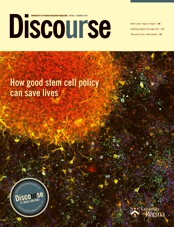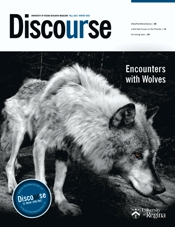Translating more than 40,000 documents will help the Cowessess First Nation team discover the identities of those buried in hundreds of unmarked graves.

“It was an answer to an SOS call. A friend of mine at the University of Regina introduced us. That’s how I was connected with Dr. Jérôme.”
Barb Lavallee recalls how she first met University of Regina associate professor Dr. Jérôme Melançon – or Dr. Jérôme, as she refers to him.
“It was like our prayers were answered. He was there. We didn’t have to explain much to him. He saw the big picture.”
And that big picture was massive.
“Our ultimate goal is to identify all the unmarked burials, and find out who the missing children who never made it home are,” says Lavallee, the lead researcher of a team working to identify all of those discovered at the burial site at Cowessess First Nation.
Crime scene
Located about 160 kilometres east of Regina, Saskatchewan, Cowessess includes the site of the former Marieval Indian Residential School, which was operated from 1898 to 1973 by the Missionary Oblates of Mary Immaculate, and then under band control until 1997.
In 2021, Cowessess was one of the first First Nations to use ground-penetrating radar (GPR) to conduct underground searches. This non-invasive method of searching the ground for disturbances led to the initial discovery of 751 unmarked graves. Chief Cadmus Delorme announced their discovery in June of that year, also reporting that about 300 people in those unmarked graves had already been identified. These revelations made clear to a much broader public something that survivors had long been saying: former residential school sites in Canada need to be investigated as crime scenes, for a crime that went on for decades.

That challenging and heartbreaking work of identification was done by Lavallee and her team. Now they’re turning their efforts to identifying the rest of those buried in the unmarked graves. To do that, Lavallee says the team has some real detective work ahead of them.
The French connection
Poring over tens of thousands of archival documents, including official government papers, diaries kept by clergy members, personal and official letters – the team is reviewing anything that provides information about the goings-on at Marieval. But not all of the documents are in English, making the task even more complex.
“When the news came out about the unmarked graves at Cowessess, I heard the name Marieval, and I knew it had clearly been French clergy who had been there. Marieval – valley of Mary,” says Melançon. Little did he know then that he would soon become part of the Cowessess team.
Lavellee says that Cowessess holds about 40,000 French-language documents, including files in the archives of the National Centre for Truth and Reconciliation in Winnipeg that have recently been provided to the team.
“We believed we had hit a wall, because when we called and got quotes for French translations, it was a lot of money by the hour. We also didn’t know if we could trust an independent source with such documents because we didn’t know what information they contained,” says Lavallee.
But when the team met with Melançon, he understood the task and was more than ready to provide support.
“As French speakers, we don't often see ourselves as being involved with what the Canadian state has done, but, in fact, look at who was there. These were French Canadians, Oblates from France. These were nuns from Quebec. So the French community is involved in residential schools and, thus, also must be involved in Truth and Reconciliation. I am honoured to be involved with this project,” says Melançon, who is the chair of the French and Francophone Intercultural Studies Program at La Cité universitaire francophone at the U of R.

As he began going through the tens of thousands of documents, Melançon discovered that most of the French-language documents were internal to the Oblates and to the Sisters of St. Joseph who were present at Marieval.
“Everything tied to official records is in English, because those were direct communications with Indian Affairs. But the internal documents are mostly in French. This is clergy people writing to each other, staff keeping their own documentation, keeping their own tabs on what was going on,” says Melançon.
Piecing it all together
But with so many documents, Melançon knew he needed help.
“One of the main issues here is the issue of justice, of rights. First Nations communities ought to have access to their own history, and their own documents, without having to pay for it. So one of my roles was to find the resources to make that happen. That’s where this grant comes from.”
He applied for and received a grant from the Social Sciences and Humanities Research Council to hire a team of translators, which now consists mostly of University of Regina students. He also has a few students who are volunteering their time.
“Dr. Jérôme’s role is to help create a more fulsome understanding of our history,” says Lavallee.
The documents that Melançon and his students have worked with so far provide a glimpse of the day-to-day activities at Marieval – documents that mention when certain children were sick, outings that were taken, specific things clergy members were responsible for, who was hired, who did what in the school.
“We have a lot of clues about who came and went at Marieval. We’ve translated documents showing which children went to see the doctor and at what times. We could see when there was a spike in epidemics, at the time of the 1918-19 influenza outbreak, for instance,” says Melançon.
He has seen documents that show evidence of children who died for reasons that were recorded, which helps to piece together this horrific puzzle. There are those who were sent to other institutions or schools. And then there are those whose traces were lost.
“And, to be clear, we've lost that trace. The people who were there knew what happened. This is where our work involves reading between the lines, and also being very careful about doing that,” says Melançon.

Meaning matters
Another part of Melançon’s work is teasing out meanings, for example, of 1930s clerical and agricultural language.
“I’m teaching my students different French vocabulary. Some of the French in these letters or diaries is very specific. I’m lucky I understand it because I come from a French farming family.”
One example is the French word battre – which means “to beat,” and also refers to threshing. So the line “We are done beating,” in French, can mean “We are done threshing.” Melançon says knowing the difference is a big deal, because there was quite a bit of agriculture around the school. “The school had gardens, its own fields, and tractors. And, of course, we know of the violent kind of beatings.”
The nuances of the language are important for Melançon to provide to his students. “Without it, because most students aren’t aware of French language around agriculture, they could be missing out on important information,” explains Melançon.
Nadine Obey is part of the Cowessess team. Her role is to meet with Jerome and his students and go over what they are translating. She then goes back and provides this information to her community’s research team and band council.
“We're still very much at the truth level within Truth and Reconciliation.”
“These personal documents help us to start to really understand the people who were involved with Marieval, so these translations are crucial to the overall project,” says Obey. She adds that the work Melançon and his students are doing is providing an understanding of what happened in the school, how it worked, and what life was like there.
“We are getting ideas about when things were worse at the school, when things were not as bad, mostly dependent upon who was in charge and who was around. Some of these documents also give us a view from the inside of who the children were,” says Melançon.
The documents also reveal the connections between the different residential schools and the outside world.
“Residential schools were not these things that were tucked away in corners, away from everybody else. When you listen to survivors, that’s the feeling that you can get because it’s from the point of view of children. They were prisoners in these schools. They couldn’t go anywhere. They didn’t see anything else. But, in fact, there's a lot of movement when it comes to the Oblates. And that's one part of the picture that we're trying to get,” says Melançon.
The documents, both French and English, show movement between the schools and the hospitals, between the residential schools and the colleges or schools where men and women became clergymen or nuns. Connections those who worked in the schools had with the rest of the world are becoming apparent. “With this insight, it’s clear that this is not only about residential schools, but about an overall system that is so large that it became easy to lose track of children,” says Melançon.
Melançon says that what the documents really give us is some truth. “And I think we're still very much at the truth level within Truth and Reconciliation as a whole.”
Sharing the truth
Part of his work is also to share that truth.
“My work includes presenting this information to the Francophone community, so more people know about our part in the overall system,” says Melançon.
Lavallee and her team are also sharing their work with other First Nations grappling with the legacy of residential schools.
“We have already started sharing what we’ve found with other First Nations, because our work is quite far ahead of where others are at.”
“We are working in a crime scene.”
Melançon will also pass on what his team learns in an effort to improve upon what they’re already doing.
“We will offer training to translators about how to interact with sovereign Indigenous nations, to help ensure that survivors’ groups and First Nations are well-treated by these translators. We will provide an overview of the residential school system. We will do what we can to make this horrific project as easy on the First Nations communities as possible,” says Melançon.
For Lavallee, this is paramount.
“I am a generational survivor. I survived residential school. So nothing really surprises me anymore. And that’s why, as a team, we’ve done a lot of intense spiritual work for what we have been experiencing in reading these documents. Our self-care has been about building spiritual and emotional armour, so that we won’t experience any type of illness. And I do believe this has helped us to keep moving forward.”
Lavallee says they have done a lot to strengthen their team to ensure they can continue their work.
“We look out for each other. When we see that there may be a weight on one of our team members, we reach out to them. We watch over each other. We pray for each other. And we're one of the very few research teams in Canada who has withstood all of the pain – mentally, emotionally, and spiritually. We're quite spiritually intelligent now. And these practices that we’ve incorporated will also be something we will share with other communities doing this work.”
In the end, Lavallee has faith that Cowessess is going to get the information they need to truly understand what went on at Marieval.
“We are working in a crime scene,” says Lavallee. “And what is really important to our entire community is not disturbing these children’s final resting places. That’s why both the French and English documents are so important. Using them to understand that overall picture will help us to avoid doing that. So we are hopeful that all these tens of thousands of documents will tell us what we need to know about who is resting there and what happened to them. That’s the reason we’re doing all of this.”












